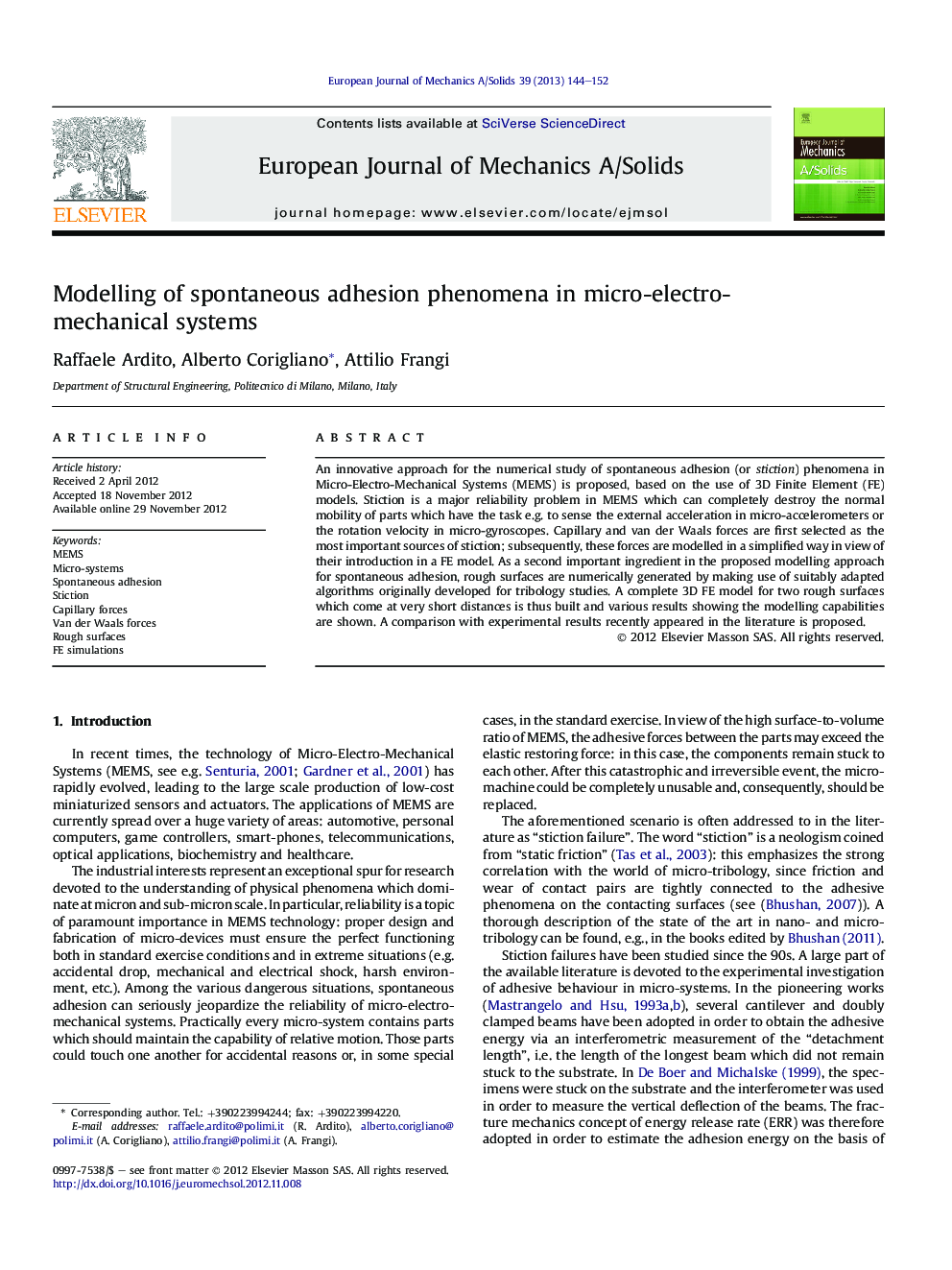| Article ID | Journal | Published Year | Pages | File Type |
|---|---|---|---|---|
| 772405 | European Journal of Mechanics - A/Solids | 2013 | 9 Pages |
An innovative approach for the numerical study of spontaneous adhesion (or stiction) phenomena in Micro-Electro-Mechanical Systems (MEMS) is proposed, based on the use of 3D Finite Element (FE) models. Stiction is a major reliability problem in MEMS which can completely destroy the normal mobility of parts which have the task e.g. to sense the external acceleration in micro-accelerometers or the rotation velocity in micro-gyroscopes. Capillary and van der Waals forces are first selected as the most important sources of stiction; subsequently, these forces are modelled in a simplified way in view of their introduction in a FE model. As a second important ingredient in the proposed modelling approach for spontaneous adhesion, rough surfaces are numerically generated by making use of suitably adapted algorithms originally developed for tribology studies. A complete 3D FE model for two rough surfaces which come at very short distances is thus built and various results showing the modelling capabilities are shown. A comparison with experimental results recently appeared in the literature is proposed.
► A new approach for modelling of spontaneous adhesion in MEMS is proposed. ► FEM is used for evaluating adhesion energy at varying environmental conditions. ► Van der Waals and capillary forces are introduced by means of simplified models. ► Rough surfaces are automatically generated through efficient algorithms. ► Numerical data are successfully compared to experimental results in dry condition.
